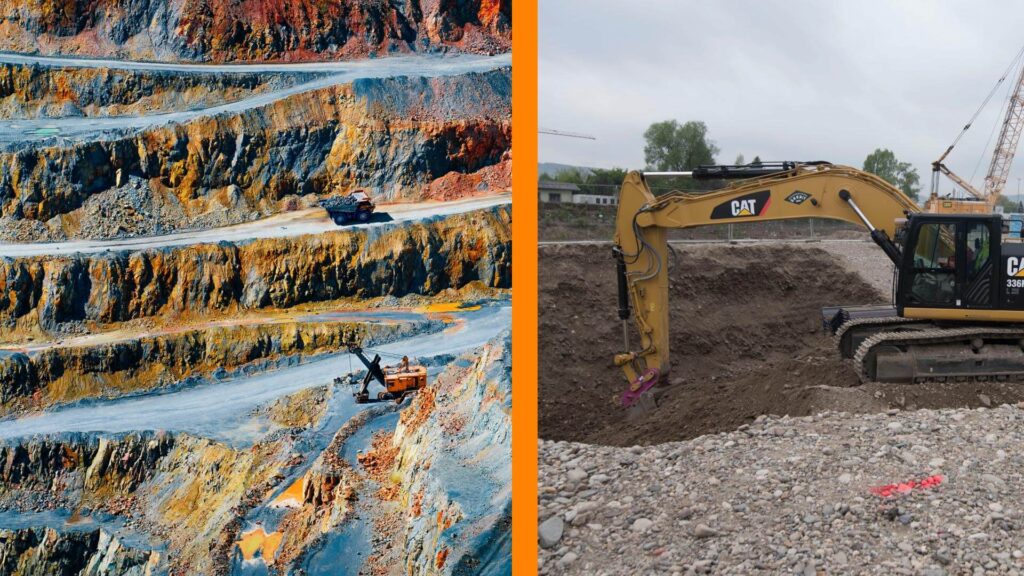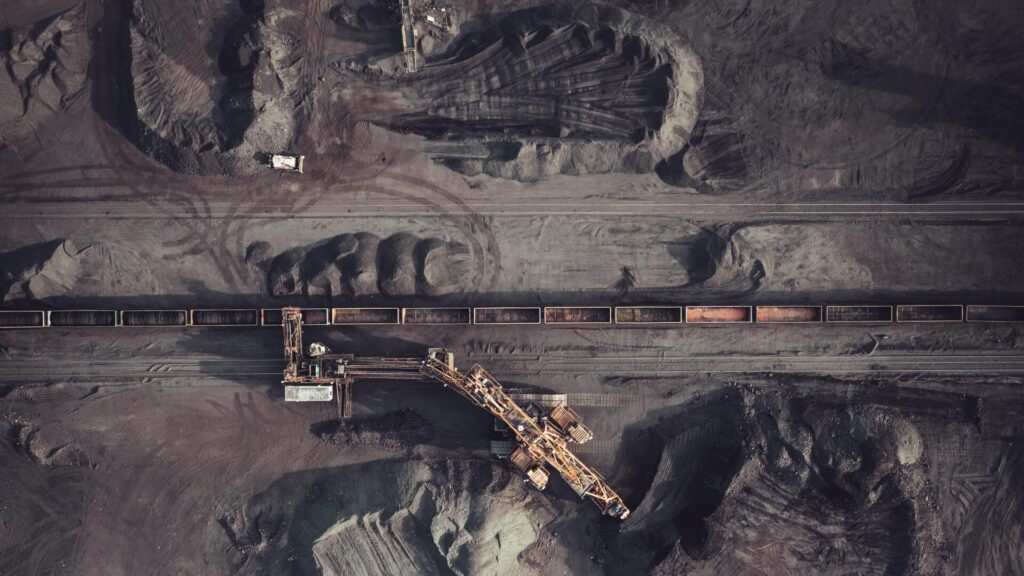Mining pumps play an essential role in mining operations, ensuring the efficient and safe transport of water, slurry, and other materials crucial to the extraction and processing of minerals. Mines rely on these pumps for a wide range of functions, from dewatering to moving slurries filled with abrasive particles. Without well-functioning mining pumps, mining activities would come to a halt, leading to costly delays and operational inefficiencies.
In modern mining, the focus has shifted toward optimizing both the efficiency and safety of industrial pumping systems. Efficient mining pumps reduce energy consumption and operating costs, while safety-focused designs help prevent accidents and ensure hazardous materials are handled safely. This balance between efficiency and safety is vital for the mining industry, where harsh conditions and challenging environments are part of the daily operational landscape.
2. Types of Pumps in Mining
Mining operations utilize several types of pumps, each suited to different tasks. Selecting the right pump is essential to maintaining both operational efficiency and safety standards in industrial pumping systems.
Centrifugal Pumps
Centrifugal pumps are among the most commonly used mining pumps due to their versatility. These pumps operate by converting rotational kinetic energy into hydrodynamic energy, efficiently moving fluids through the system. Centrifugal pumps are highly effective for transporting water and low-viscosity liquids. In mining, they are a crucial part of industrial pumping systems, used for general dewatering, water circulation, and slurry transportation. Their advantages include simple design, relatively low cost, and ease of maintenance. However, they are less suitable for handling thick slurries or abrasive materials, which can wear down internal components over time, making them less ideal for more demanding industrial pumping systems applications.
Positive Displacement Pumps
Positive displacement pumps are another key player in the mining industry. These mining pumps are particularly suited for high-viscosity fluids and abrasive slurries, as they move fluids by trapping a fixed amount of liquid and displacing it through the pump. Common types of positive displacement pumps include piston, diaphragm, and peristaltic pumps, all of which excel in handling thick, heavy materials. Positive displacement pumps are often used in processes that involve highly concentrated slurries, chemicals, and other abrasive mixtures, making them indispensable in certain mining operations. Their ability to handle harsh materials helps maintain the efficiency and safety of complex mining processes, particularly in chemical pumping applications.
Submersible Pumps
Submersible mining pumps are widely used for dewatering in underground mining operations, where groundwater needs to be removed quickly and efficiently. These pumps are fully submerged in the fluid they pump, allowing them to handle water and slurry removal directly from flooded areas or mining pits. One of the key benefits of submersible mining pumps is their ability to operate quietly and efficiently while being protected from external damage due to their placement within the fluid. Submersible mining pumps help ensure that mining operations can continue uninterrupted by groundwater intrusion.
3. Efficiency in Mining Pumping Systems
Mining is an energy-intensive industry, and mining pumps are among the largest consumers of energy in mining operations. Improving pump efficiency is, therefore, a top priority for mining companies seeking to reduce operational costs and minimize environmental impact.
Energy Efficiency
One of the most effective ways to improve energy efficiency in mining pumps is by using Variable Frequency Drives (VFDs). VFDs adjust the motor speed of the pump according to the required flow rate, optimizing energy consumption based on demand. This prevents pumps from running at full capacity when it’s unnecessary, resulting in significant energy savings. In mining operations, where water and slurry volumes can vary drastically, VFDs offer a flexible solution to maintain operational efficiency. By adjusting pump output to match the conditions, VFDs help extend the lifespan of the pump while reducing energy consumption.
Minimizing Downtime
Efficiency in mining is not only about energy consumption but also minimizing downtime. When mining pumps, including those used for chemical pumping, break down, mining operations can be severely impacted. This is why regular maintenance is essential. By monitoring pump performance and scheduling routine maintenance, mining operators can detect issues before they escalate into costly failures. Additionally, modern monitoring technologies allow for real-time tracking of pump efficiency and performance, enabling operators to make necessary adjustments quickly. This is particularly important in chemical pumping operations, where the handling of hazardous materials requires precision and consistency. Keeping pumps in peak condition is crucial to maintaining the flow of water, slurry, and other materials, thus ensuring the continuity of operations in industrial pumping systems.

4. Safety Considerations
While efficiency is important, safety is paramount in the mining industry. Pumps used in mining operations must adhere to strict safety standards to protect both workers and the environment.
Overpressure Protection
One of the key safety considerations in mining pumps is the potential for overpressure, which can lead to equipment failure or accidents. Overpressure protection devices, such as pressure relief valves and alarms, are critical components of safe mining operations. These devices monitor the pressure within the mining pumps system and automatically release pressure when it reaches dangerous levels, preventing damage to equipment and reducing the risk of accidents. In industrial pumping systems, incorporating these safety features ensures mining pumps can operate more reliably, safeguarding both worker safety and operational efficiency. Additionally, such features are essential in chemical pumping applications within industrial pumping systems, where handling hazardous substances requires even more stringent safety measures. This attention to safety not only enhances the lifespan of the pumps but also ensures compliance with environmental and industrial regulations, further safeguarding mining operations.
Handling Hazardous Materials
In many mining operations, pumps must handle hazardous materials, such as toxic chemicals or gases. Pumps designed for such tasks must be equipped with special features to contain and control these substances. For instance, double-sealed pumps help prevent leaks and contamination, ensuring that dangerous materials are safely transported without exposing workers or the environment to harm. Specialized pumps designed for handling corrosive or abrasive materials further enhance safety by reducing wear and tear, thus preventing unexpected breakdowns or leaks. Chemical pumping operations often require additional safety measures to ensure the safe handling of volatile substances.
Emergency Systems
To ensure the uninterrupted flow of critical processes, mining operations often rely on emergency backup systems. These backup mining pumps are activated in the event of a failure in the main system, ensuring that essential operations, such as dewatering, chemical pumping, or slurry transport, can continue. Emergency pumps provide a crucial safety net, especially in deep or underground mining operations where the sudden failure of a pump could result in flooding, chemical spills, or other hazardous conditions.
5. Conclusion
In the mining industry, pumping systems are indispensable for ensuring the efficient transport of water, slurry, and other materials, including those involved in chemical pumping processes. Balancing efficiency and safety is critical for maintaining smooth operations and protecting both workers and equipment. Centrifugal, positive displacement, and submersible pumps each offer unique advantages, making them suited to different aspects of mining operations, including the safe handling of chemicals.
Energy-efficient practices, such as the use of VFDs, help reduce operational costs, while regular maintenance ensures minimal downtime. At the same time, safety considerations, including overpressure protection, specialized designs for hazardous materials, and backup systems, are vital to preventing accidents and equipment failures.
By focusing on both efficiency and safety, mining companies can optimize their pumping systems to meet the demands of modern mining operations while ensuring the protection of their workforce and the environment.


